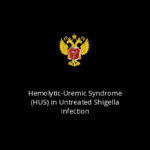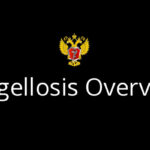Onchocerciasis Epidemiology Symptoms Diagnosis and Treatment
What is meant by onchocerciasis?
Onchocerciasis or river blindness (онхоцеркоз, العمى النهري) is a tropical parasitic disease caused by ingestion of parasitic worm of the the genus Onchocerca volvulus (filaria). It is transmitted through the bite of a blackfly of the genus Simulium that breed in fast flowing rivers and streams, thus affecting individuals living nearby.
Main symptoms include itchy skin bumps, and blindness.
Onchocerciasis is present in 36 tropical countries and is the world’s second most common cause of postinfectious blindness, after trachoma. It affects people in Africa, the Americas and the Arabian peninsula.[1]
Where is onchocerciasis distributed?
The distribution of onchocerciasis is directly linked to the location of blackflies of the genus Simulium that breed in fast flowing rivers and streams in the intertropical zones. Therefore, it affects millions of people, and impacts mainly the lives of African people (about 90% of the disease occurs in Africa). However, the disease is also found in Latin America and in the Arabian Peninsula (Yemen).
How is onchocerciasis transmitted?
Onchocerciasis is spread by the bite of an infected blackfly of the genus Simulium. It is also called River Blindness because Simulium blackflies breed in fast flowing rivers and streams are naturally found in the fertile river valleys and because onchocerciasis can cause blindness.
What are the signs and symptoms of onchocerciasis?
Symptoms of onchocerciasis are caused by the microfilariae. Adult microfilaria move around in the subcutaneous tissue or the circulatory system in the body of the host and incite an intense acute inflammatory response, especially when these microfilariae die. Infected people may show symptoms such as severe itching, skin bumps, and blindness.
What are the consequences of the disease?
The microfilariae incite an intense acute inflammatory response, especially when they die. Sever toxic reactions affecting the skin and eye occur when these microfilariae die, resulting in terrible itching and eye lesions that may lead to irreversible blindness after repeated years of exposure. Moreover, chronic exposure may lead to disfiguring skin diseases such as the leopard skin or lizard skin.
About 50% of mid-age men had been blinded by the disease in some West African communities living by the fertile river valleys and because of this people fled the fertile river valleys where the blackflies are naturally found to settle in less fertile upland country. Hence resulting in huge annual economic losses (30 million USD in the 1970s).
What is the cause of onchocerciasis?
The cause of onchocerciasis is the transfer of Onchocerca volvulus infective larvae through the bite of a female blackfly of the genus Simulium. Thereafter, larvae may develop into filarial nematodes (adult male and female worms) in the subcutaneous tissue.
Diagnosis of Onchocerciasis
How to diagnose onchocerciasis?
The golden standard test for the diagnosis of onchocerciasis is the skin snip, Skin snips are usually taken from the iliac crest, the scapula, and the lower extremities with a sclerocorneal punch (punch biopsy) or by scalpel shave biopsy that can be performed by raising a small cone of skin with a needle and shaving it off with a scalpel, This results in the removal of around 1-2 mg of tissue, which is then incubated in normal saline (a physiologic solution) for 24hrs at room temperature to allow the larvae to emerge. The microfilariae can then be identified microscopically.
The skin snip sensitivity can be limited in low-intensity infections and in the prepatent period, which can last from 12 to 18 months. However, performing PCR of the skin snip can increase the sensitivity in such situations.
Skin nodules can be surgically removed and examined for adult worms.
What is skin snip test?
A small slice of the skin is removed with a scalpel to obtain 3-5 mg of tissue (skin snip). After that, the skin snip is placed in saline for 24hrs or incubated in a cultured medium for 4hrs to observe the microfilariae. The microfilariae can then be identified microscopically by counting the emerging microfilariae to estimate the microfilarial load.
What is a skin culture and what is it used to diagnose?
A skin culture is a lab test used to identify germs that cause dermal problems.
How to treat onchocerciasis?
The gold standard treatment for onchocerciasis is ivermectin (Mectizan) in combination with a 6-week course of doxycycline, which has been clinically proven to reduce the occurrence of blindness and to reduce severity of skin manifestations; Ivermectin kills the microfilariae (larvae) and sterilizes the female macrofilariae (adult worms).
Combination therapy with a 6-week course of doxycycline has been proven effective in improving the outcomes of onchocerciasis, as doxycycline kills more than 60% of the female macrofilariae and sterilizes from 80-90% of the adult worms 20 months after treatment.
Infected people are usually treated with a combination therapy of ivermectin and doxycycline, two doses of ivermectin are administered along with a 6-week course of doxycycline, six months apart. The entire process is then repeated every three years.
How do you prevent onchocerciasis?
The best prevention methods include taking personal protection measures against blackflies (Simuliidae) such as covering Exposed Skin, wearing EPA-registered insect repellents such as DEET (n n-diethyl-meta-toluamide) on exposed skin, wearing long trousers and long sleeved shirts during the day when outdoors, and wearing permethrin factory-treated clothing or spray permethrin on clothing to kill blackflies (permethrin insect repellent).
References

Verified by: Dr.Diab (December 19, 2023)
Citation: Dr.Diab. (December 19, 2023). Onchocerciasis Epidemiology Symptoms Diagnosis and Treatment. Medcoi Journal of Medicine, 22(2). urn:medcoi:article18044.



















There are no comments yet
Or use one of these social networks